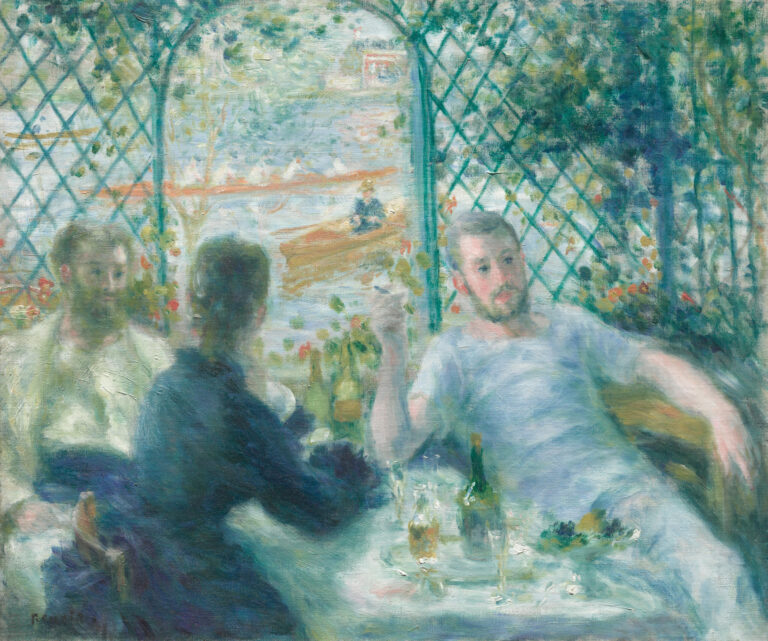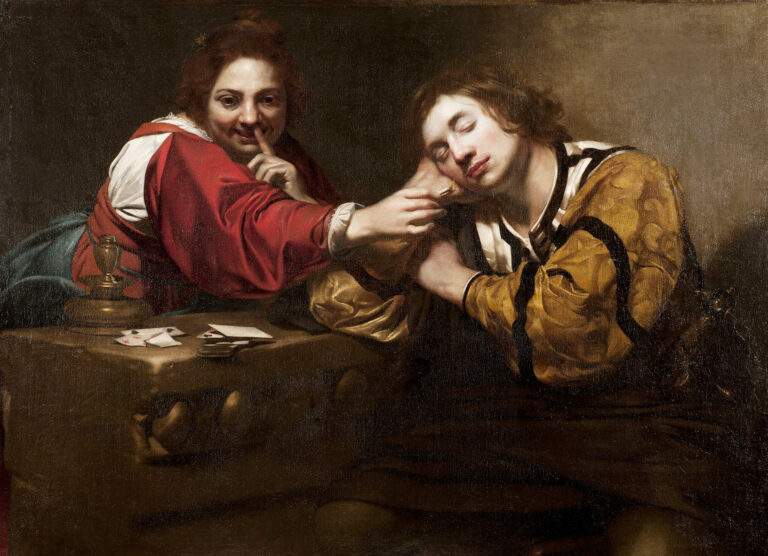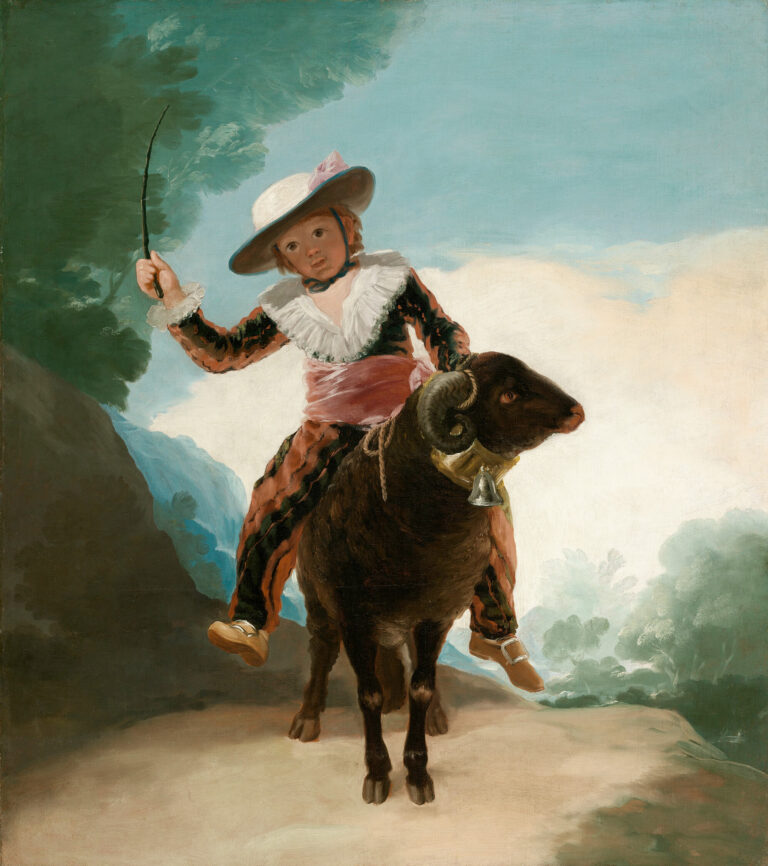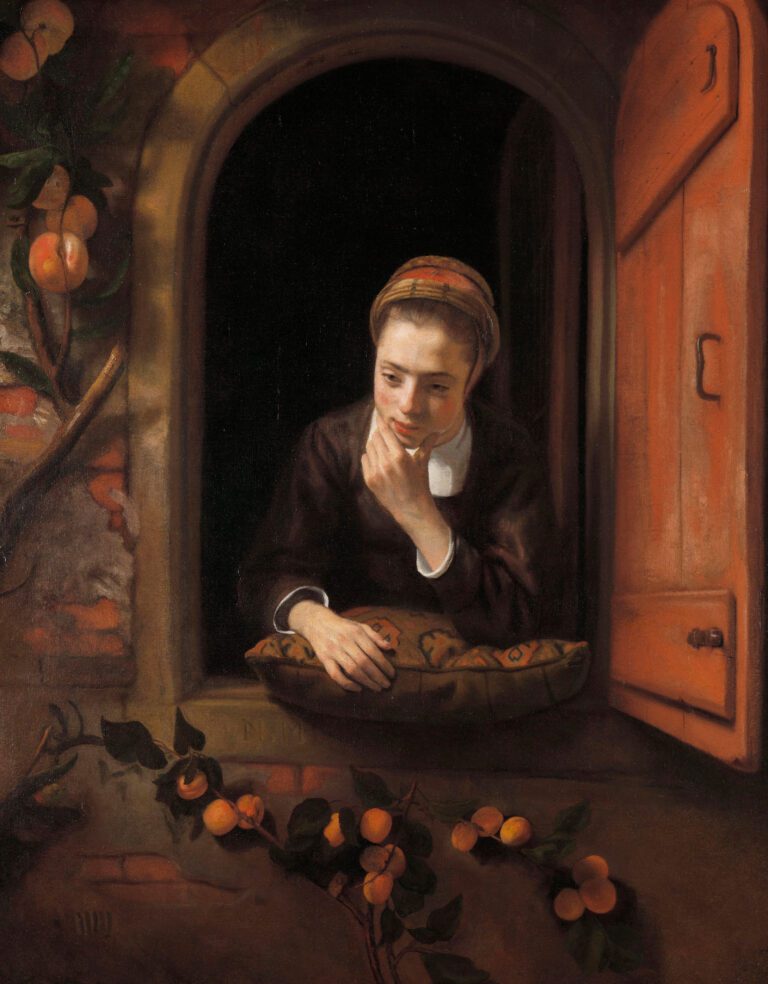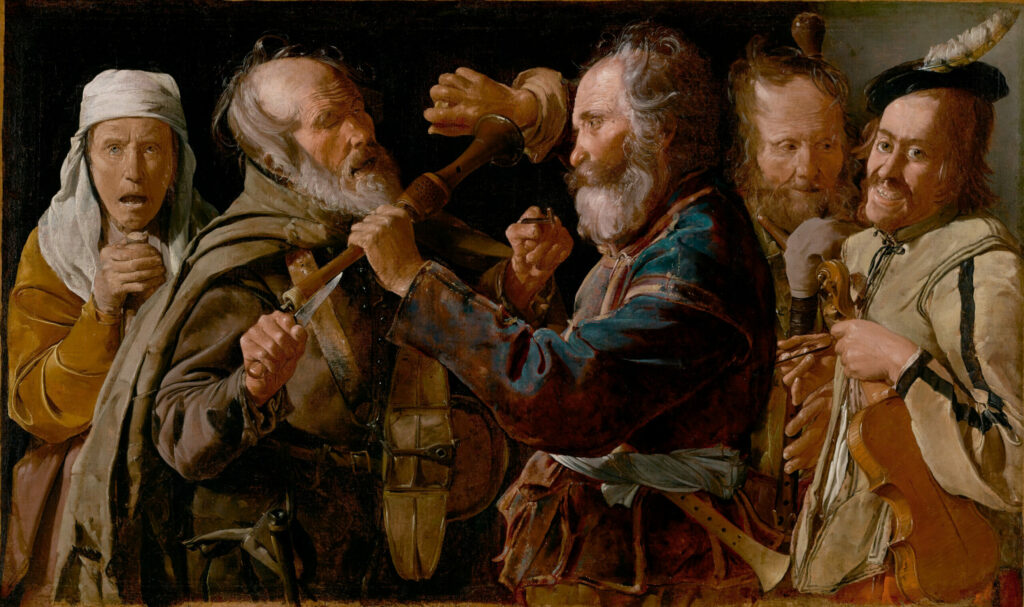
Lorraine, circa 1625. In a dark alley, two street musicians clash over a lucrative spot. Georges de La Tour immortalizes this scene with striking realism.
Raw Violence Under the Brush
The composition compresses five figures into a cramped space. The blind hurdy-gurdy player brandishes a knife and the crank of his instrument. His attacker squeezes a lemon into his eyes while striking him with his shawm. Two companions laugh. A horrified old woman, broom in hand, implores in vain for the fight to stop. La Tour paints every detail with clinical precision. The painter perfectly masters the rendering of textures: the worn velvet of the clothing, the polished wood of the instruments, the tangled hair. The viewer becomes an uncomfortable witness to this everyday violence.
A Merciless Social Mirror
This work belongs to Georges de La Tour’s “diurnal” period, before his famous nocturnal candlelit compositions. It fits within the Caravaggesque tradition then in vogue in France. The Lorraine painter depicts without embellishment the marginality of the 17th century: beggars and itinerant musicians formed a fascinating underworld. This brawl reveals the harshness of survival in these precarious circles. Each spot on the street represented a vital economic stake. La Tour refuses any romantic idealization of poverty.
The Lorraine Master of Chiaroscuro
Georges de La Tour (1593-1652) worked primarily for the ducal court of Lorraine and Louis XIII. His unique style combines Caravaggio’s influence with a geometrization of forms and a contemplative approach. This canvas testifies to his extraordinary talent as a social observer.
Think About It
💭 This violent scene questions our relationship with the excluded. How do we look today at those struggling to survive in our streets?
About this work
- The Musicians’ Brawl, Georges de La Tour, circa 1625-1630
- Oil on canvas, 86.4 × 141 cm
- The J. Paul Getty Museum, Los Angeles
- https://www.getty.edu/art/collection/object/103RCX
Exhibition: Georges de La Tour, Between Shadow and Light at the Musée Jacquemart-André
The Musée Jacquemart-André (Paris) presents from September 11, 2025 to January 25, 2026 an exceptional retrospective dedicated to Georges de La Tour, the first in France since 1997. This exhibition brings together more than 30 masterpieces from the forty or so known works by this enigmatic artist of the Grand Siècle. Influenced by Caravaggism without having traveled to Italy, La Tour developed a personal and bold interpretation of chiaroscuro, distinguished by sober compositions and striking realism. Fascinated by artificial light effects, he created iconic nocturnal candlelit scenes where the flickering flame becomes the central subject, giving his canvases an intensity that is at once poetic, fragile, and timeless.
Beyond genre scenes and games, Georges de La Tour is above all recognized for his religious canvases imbued with remarkable spiritual intensity. By giving face and dignity to marginal figures—blind musicians, elderly people, peasants—he elevates the ordinary to the sacred and transcends the triviality of everyday life through his masterful use of light. This exhibition represents a unique opportunity to discover the rare and seldom-exhibited work of one of the most fascinating painters in French art history, a painter of the people who sublimates the solitude of his subjects with incomparable spiritual intensity.
Everything You Need to Know About the Georges de La Tour Exhibition at the Musée Jacquemart-André
- Where: Musée Jacquemart-André, 158 boulevard Haussmann, 75008 Paris (France)
- When: September 11, 2025 to January 25, 2026
- More: https://www.musee-jacquemart-andre.com/fr/georges-tour

